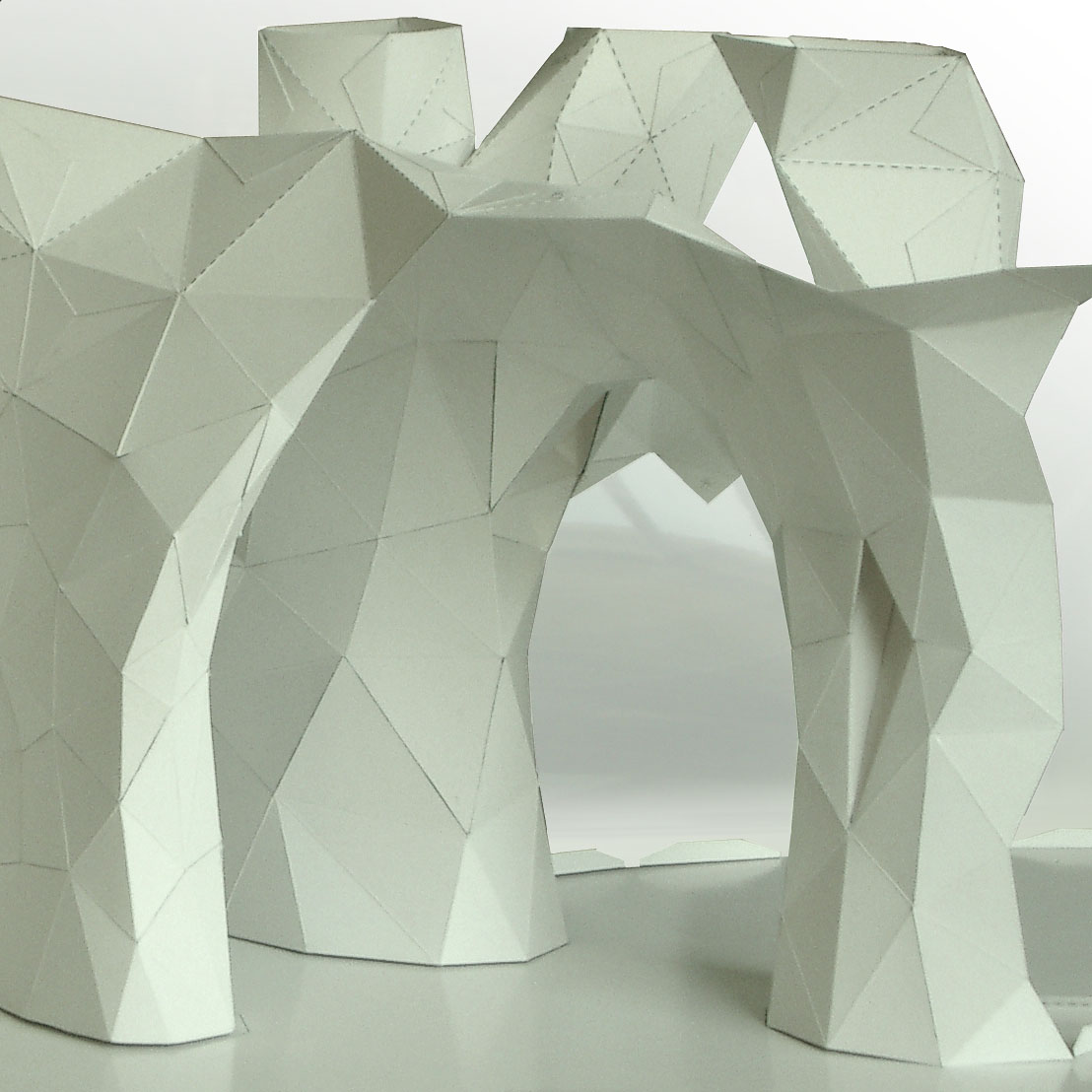


HORST KIECHLE



Title of work: Mangrove Mountain
[Statement] We are still very much influenced by the mind-set created in the first half of the last century.
Design standards and manufacturing based on mass-produced standardized products promoted mental pictures whose values have found their way into language and people's world views.
A righteousness that borders on dogma can be seen in concepts associated with the 'right angle', 'straight lines' and phrases such as 'don't bend the rules'. Concepts of hygiene are implicitly associated by referring to 'clean lines', whereas 'regular grids' and 'proper alignment' can be seen as an unconscious fetish with orderliness and perfection.
These concepts have alienated us from nature where the right angle, straight lines and perfect regular grids are non-existent or rare exceptions.
Computer technology is the driving force behind the technological change in this century. On the one hand it has been used to make last century's concepts more efficient. On the other hand computer technology will (and has already started to) change aesthetics, design and manufacturing standards. The cost-efficiency of computer assisted production enables smaller production runs. The simple change of focus from mass produced identical units to mass produced self-similar objects might gradually change the predominant world view towards one that celebrates diversity, complexity and imperfection. This development is by no means guaranteed - especially as some nasty side effects will also develop such as powerful control over people and loss of privacy at an individual's level. On a global level metropolises will lose their cultural identity whilst the chasms between city and country life will deepen.
The work at PICI reflects some of my ongoing concerns, such as the exploration of the creative potentials of computer technology for 3D design and manufacture. This is coupled with an ecological awareness, combining a high-tech design process with low tech materials and assembly procedures. The resulting products hopefully show that it is desirable and economically viable to include complexity, irregularity and imperfection into our built environment.
A concern particular to this exhibition is the digital tranferral of a tree from a rural property in Australia to metropolitan Seoul. The work will not be perfect -
in fact it will highlight the pathetic level we are at when trying to copy the complexities and imperfections of nature with man-made technology.
[Horst Kiechle, Amorphous Constructions, 2004]